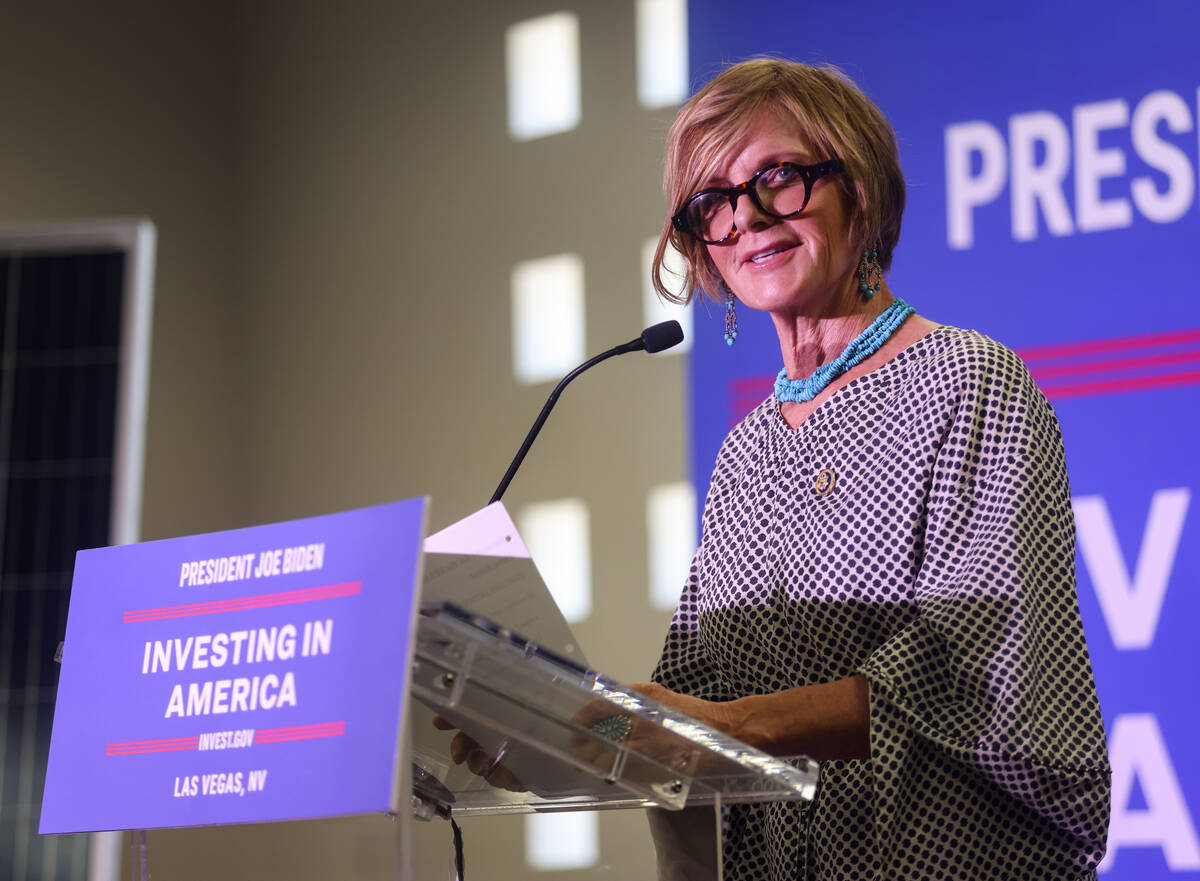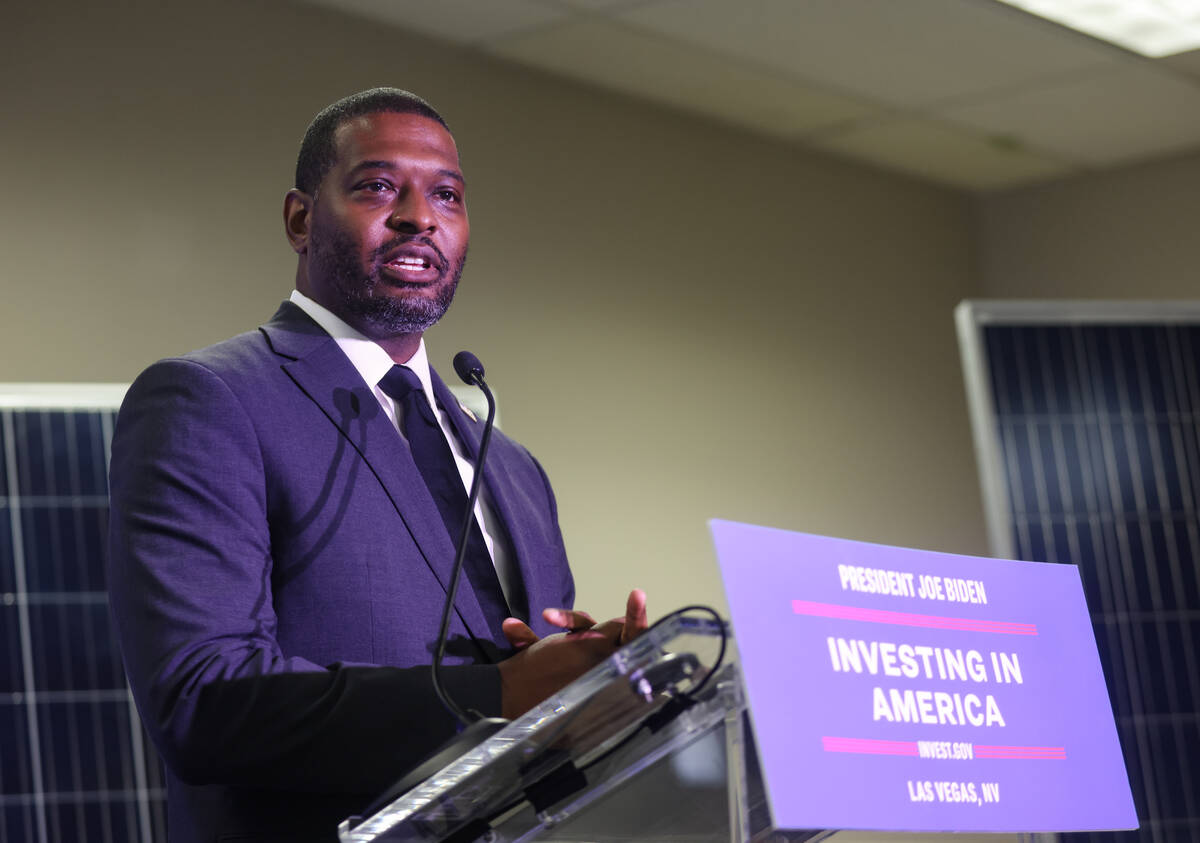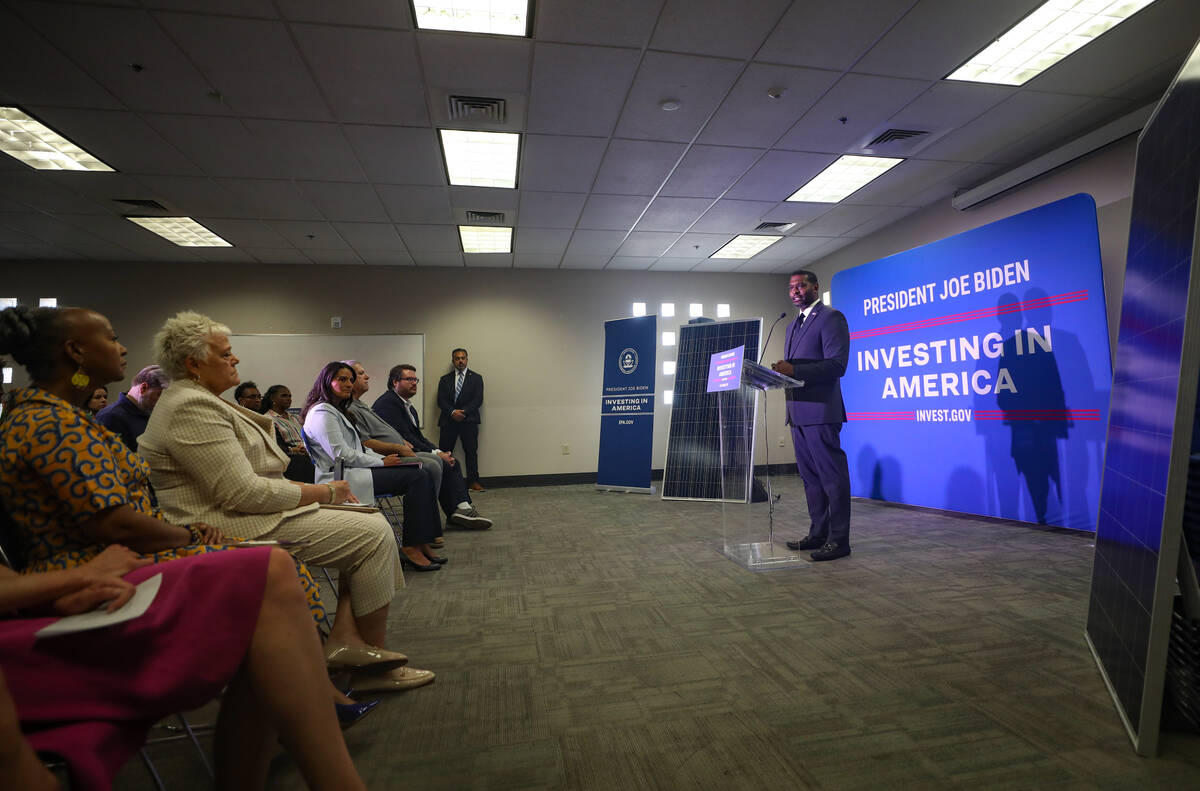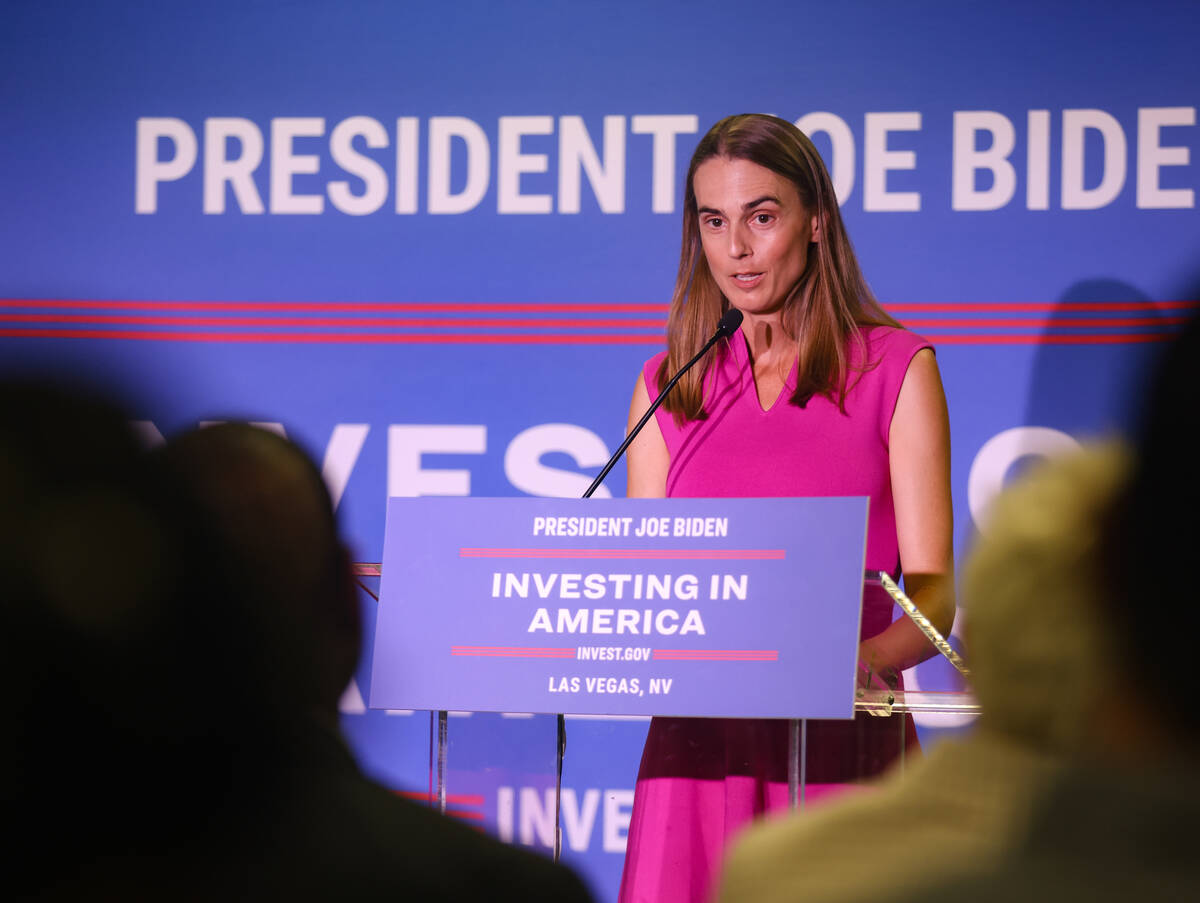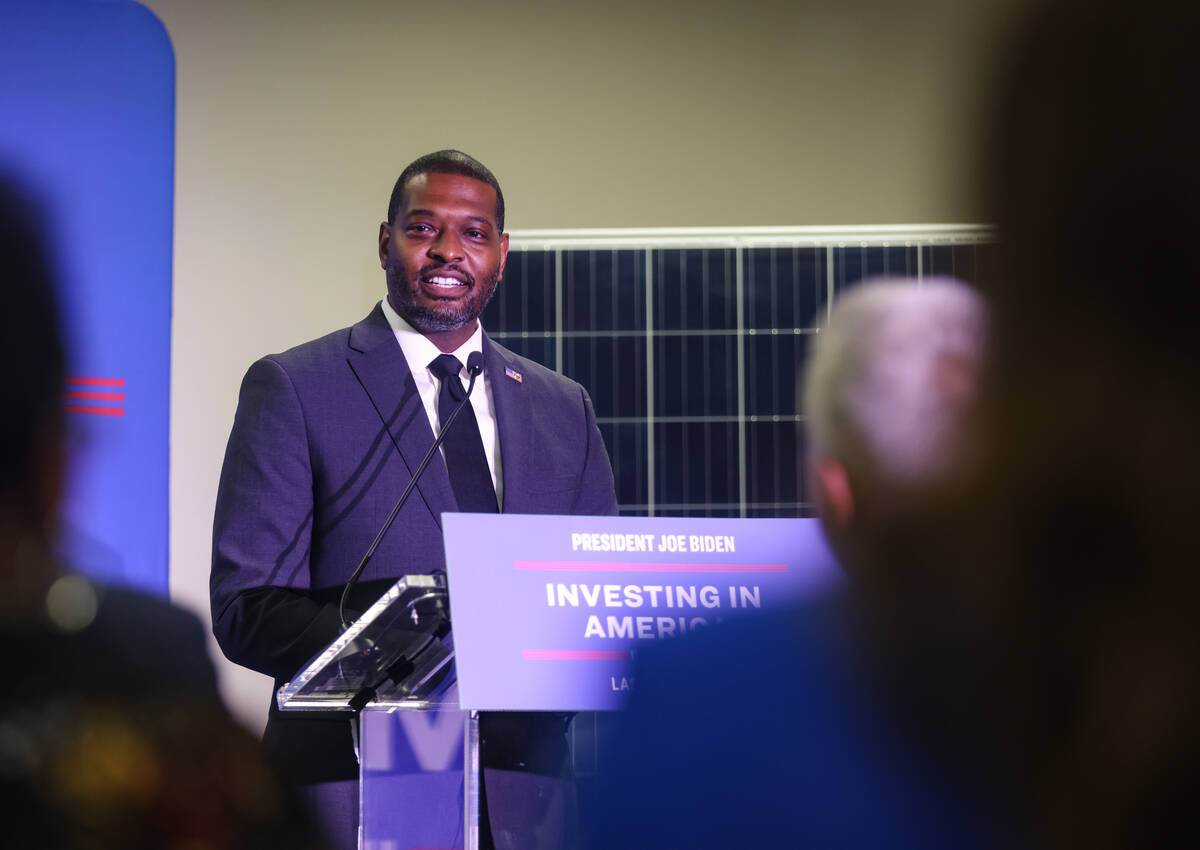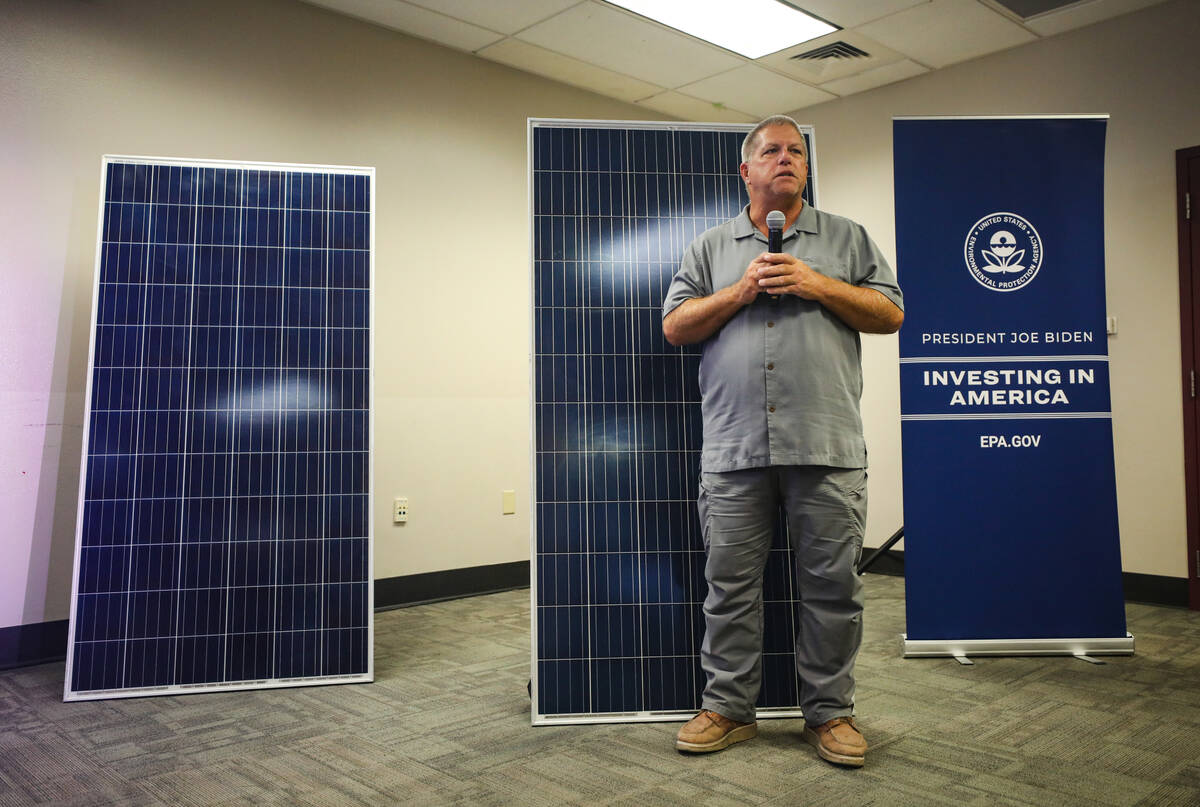‘Power of the sun’: $156M grant to jump-start solar energy in Las Vegas
Harnessing power from the Mojave Desert sun has long been touted as a feasible part of the clean energy transition.
But up-front costs to install solar panels can be exorbitant for low-income homeowners like Bonnie Radden, a Las Vegas resident and a bishop with Refiner’s Fire Fellowship’s United Church of Christ.
Radden, who said she moved to Nevada following the 2017 mass shooting as a state contractor working on mental health resources, soon found herself out of a job and battling a new monster: a cancer diagnosis.
“A lower utility bill would allow me not to choose between my cancer medication or my energy bill and other necessities,” Radden said. “It would take the stress away.”
Her hope for reducing the costs of homeownership? Solar energy, supported by a new $156 million Environmental Protection Agency grant that will boost Las Vegas’ solar panel stock on single- and multi-family homes, as well as community solar options.
Radden joined national EPA Administrator Michael Regan, U.S. Rep. Susie Lee, D-Nev., and other solar energy advocates at Desert Breeze Community Center on Monday to demonstrate the money’s anticipated impact.
Nevada is one of 60 entities — states, nonprofits and Native American tribes — that will benefit from a pool of $7 billion for solar energy from the Inflation Reduction Act, the largest financial investment in mitigating carbon emissions and climate change in U.S. history.
“We’re trying to harness the power of the sun to be sure that no one in this country has to choose between food, medication and their power bills,” Regan said, thanking Lee for voting for the Inflation Reduction Act. There are congressmen who voted against the bill who are now celebrating its impacts in their communities, he added.
When can Nevadans apply?
The grant has a life of five years, said Kirsten Stasio, CEO of the Nevada Clean Energy Fund, the organization in charge of leveraging the federal funds into specific, targeted programs.
Larger-scale community solar projects and multi-family homes will be able to apply to access funds in the fall, with applications for single-family homes to open soon after, Stasio said.
NV Energy is required by law to have multiple community solar sites, which allow Nevadans who can’t afford to install their own panels to tap into the greater solar energy grid. Lawmakers and advocates have criticized the utility for not keeping pacewith other states with community solar, but this grant could help get the Silver State up to speed, with a focus on underserved areas.
“Low-income households are often left behind in the energy transition because they typically lack access to capital and the technical assistance necessary to participate in clean energy opportunities,” Stasio said.
Across Las Vegas, many are excited to tap into this funding, said Mary House, a Las Vegas resident who serves as the first lady of Mountaintop Faith Ministries in Spring Valley.
The faith leader has been awaiting an investment like this since the ’80s, she said, when she learned of her neighbor’s solar panels that kept the lights on during a blackout on her street.
“The health of our community is at risk, especially with low-income and fixed-income families because they are hit the hardest and left in urban heat islands,” House said. “I’m so glad to know that’s about to change.”
Contact Alan at ahalaly@reviewjournal.com. Follow @AlanHalaly on X.



